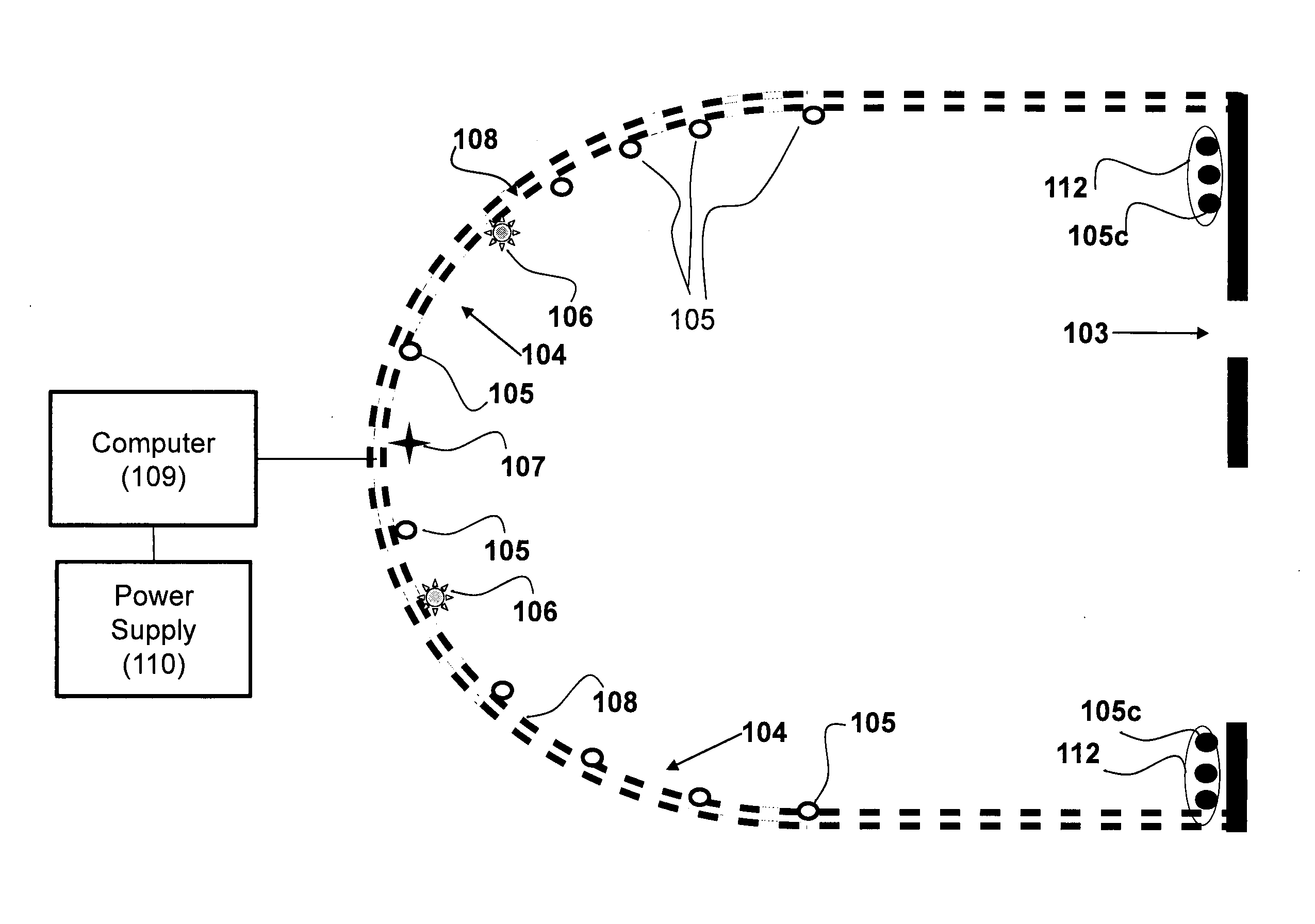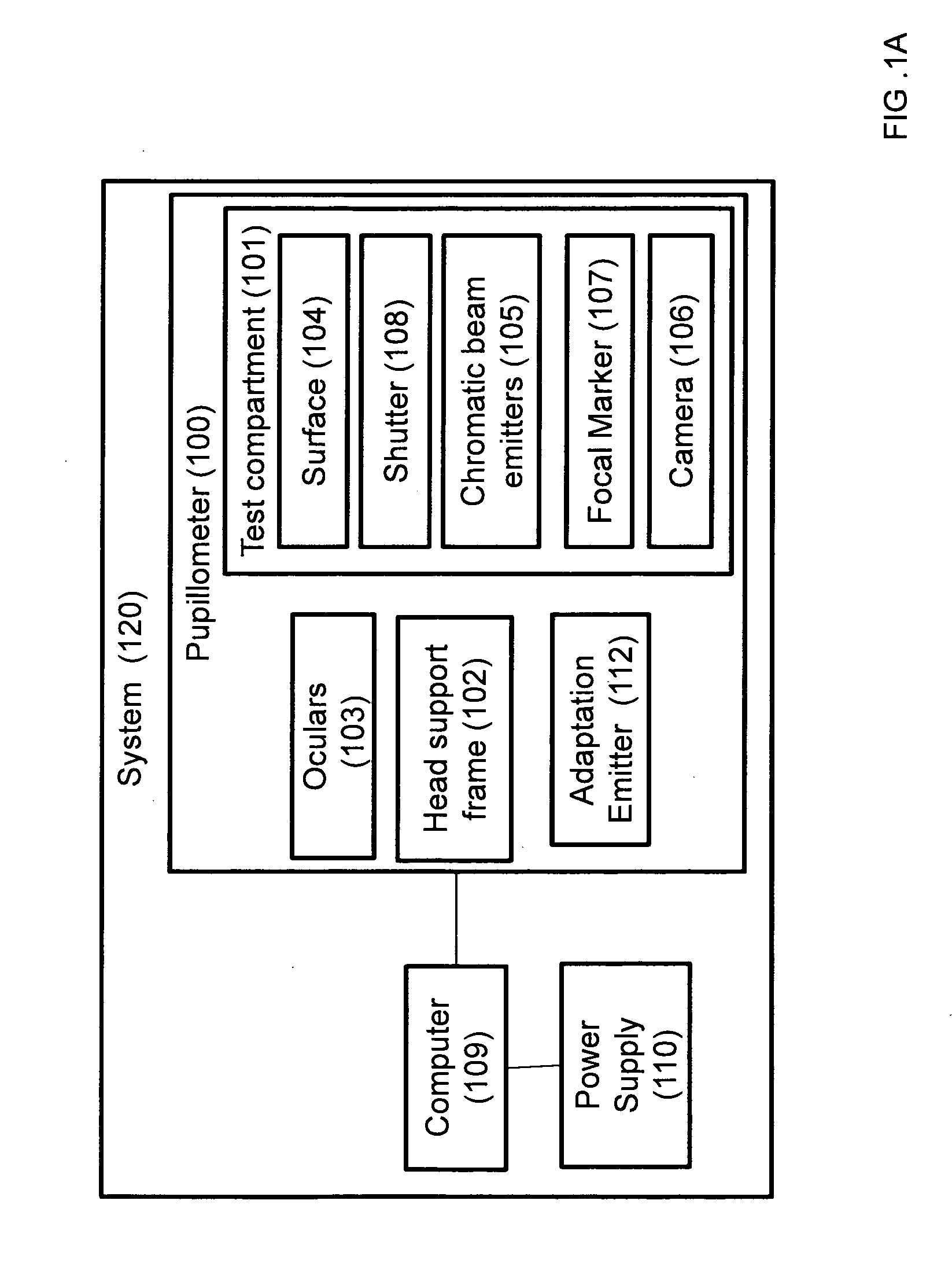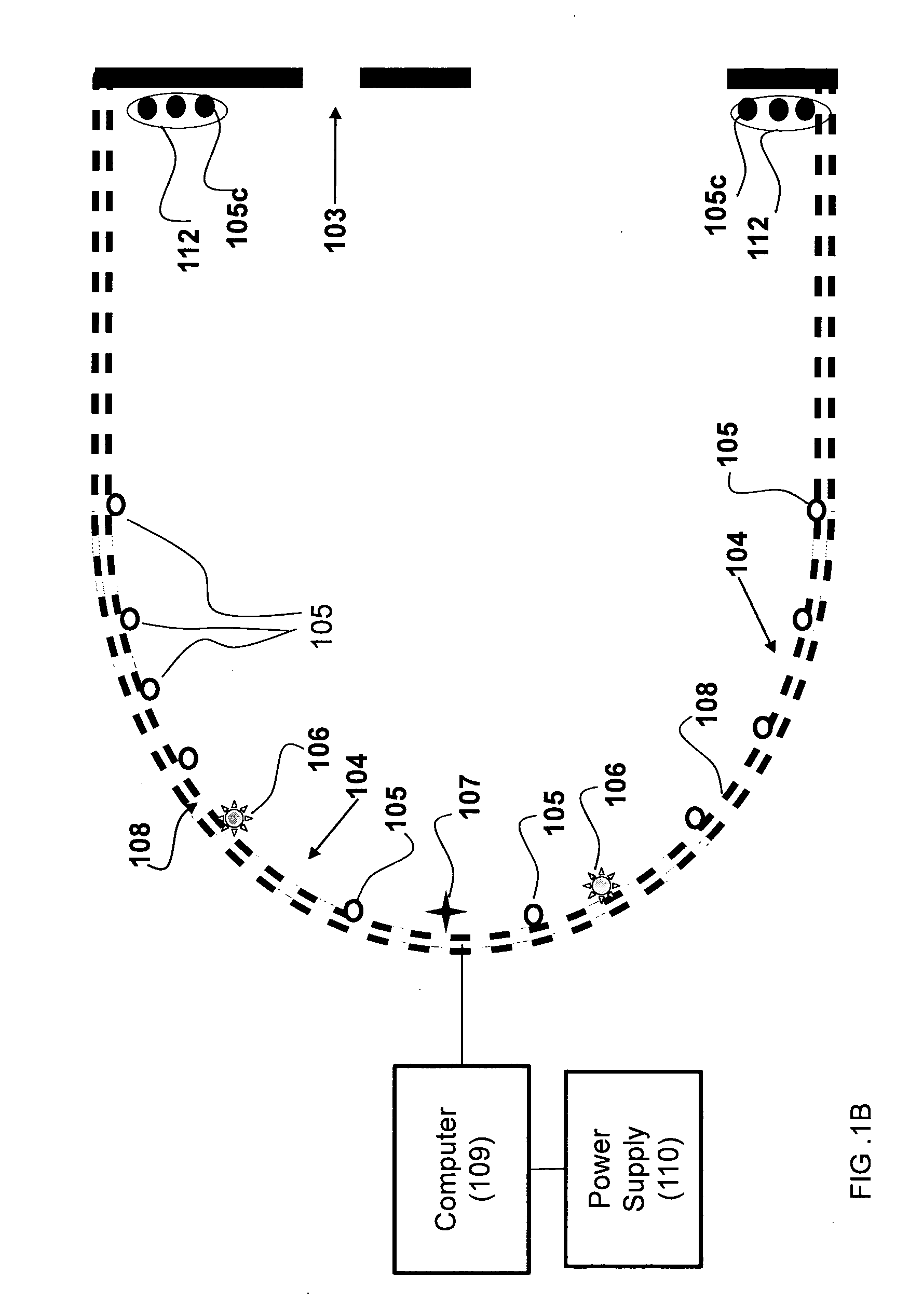System And Method For Objective Chromatic Perimetry Analysis Using Pupillometer
a chromatic perimetry and objective technology, applied in the field of visual field testing, can solve the problems of false medical diagnosis, inability to repeat, especially severe problems, etc., and achieve the effect of overcompensating background deficiencies, being more reliable and repetitiv
- Summary
- Abstract
- Description
- Claims
- Application Information
AI Technical Summary
Benefits of technology
Problems solved by technology
Method used
Image
Examples
example 1
Normal Subjects
[0141]The system and method described in FIGS. 1-3 was tested on subjects having a healthy eye, in total 25 eyes from 14 subjects were tested, 6 females and 8 males, with a mean age 29.8 years. The stimulus provided as follows: first stimulus characteristics was a chromatic beam having a wavelength of 480±19 nm, duration of about 1 s (one second), provided three times; inter-stimuli delay of 1023 ms (milliseconds) and intensity of 3.98×10−8 cd / m2; and second stimulus characteristics was a chromatic beam having a wavelength of 640±10 nm, duration of about 1 s (one second); inter-stimuli delay of 891 ms (milliseconds) and intensity of 3.98×10−8 cd / m2.
[0142]The visual field map was generated for both first and second stimuli, FIG. 4A shows the objective PLR response obtained with the second stimuli, while FIG. 4B shows the objective PLR response obtained with the first stimuli. Both FIGS. 4A and 4B show the respective population percentile score in 75th percentile, 50th ...
example 2
Glaucoma Patient
[0150]The system and method described in FIGS. 1-3 was tested on subjects with diagnosed Glaucoma, in total 5 eyes were tested from 3 subjects, 1 female and 2 male, with a mean age of 66.5 years. The stimulus tested was as follows: first stimulus characteristics was a chromatic beam having a wavelength of 480±19 nm, duration of about 1 s (one second), provided three times; inter-stimuli delay of 1023 ms (milliseconds) and intensity of 3.98×10−8 cd / m2; and second stimulus characteristics was a chromatic beam having a wavelength of 640±10 nm, duration of about 1 s (one second); inter-stimuli delay of 891 ms (milliseconds) and intensity of 3.98×10−8 cd / m2.
[0151]The visual field map was generated for both first and second stimuli in all subjects, an example taken from one subject is provided in FIGS. 6A-D. FIG. 6A shows the objective PLR response obtained with the second stimuli, while FIG. 6B shows the objective PLR response obtained with the first stimuli. The visual f...
PUM
 Login to View More
Login to View More Abstract
Description
Claims
Application Information
 Login to View More
Login to View More - R&D
- Intellectual Property
- Life Sciences
- Materials
- Tech Scout
- Unparalleled Data Quality
- Higher Quality Content
- 60% Fewer Hallucinations
Browse by: Latest US Patents, China's latest patents, Technical Efficacy Thesaurus, Application Domain, Technology Topic, Popular Technical Reports.
© 2025 PatSnap. All rights reserved.Legal|Privacy policy|Modern Slavery Act Transparency Statement|Sitemap|About US| Contact US: help@patsnap.com



